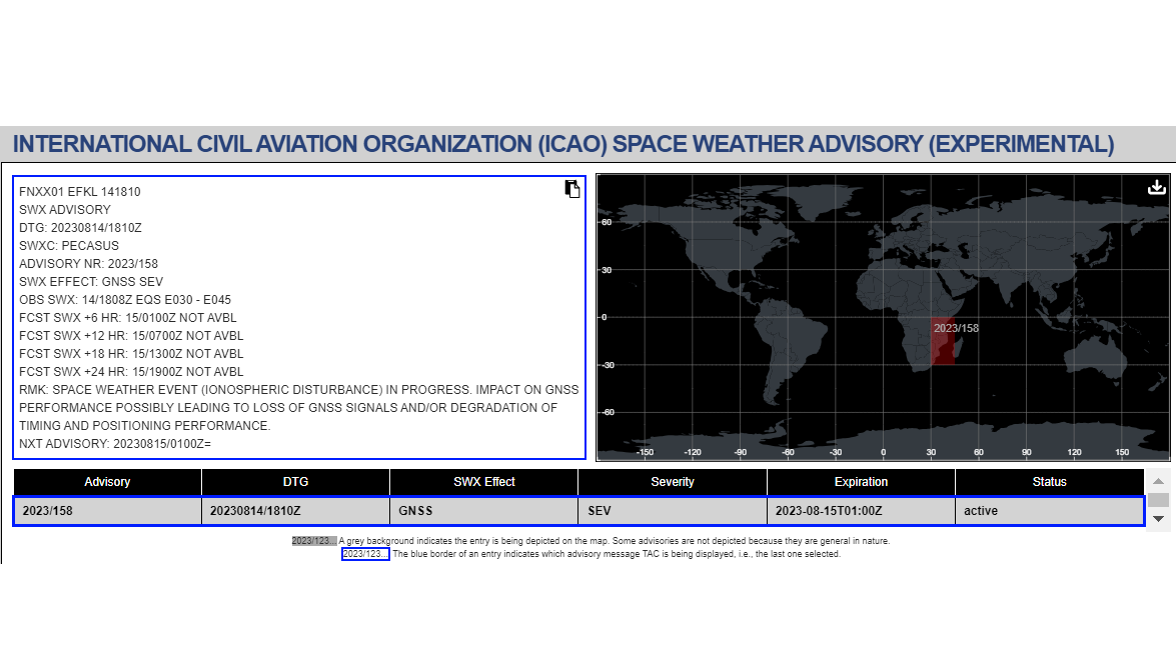
Usage
The ICAO Space Weather Advisories interface provides public access to advisories that may not otherwise be available to those outside of the aviation industry.
Provided is a list of advisories issued over the last 24-hours. Active advisories are always listed first. Selecting advisories from the table will toggle on/off the advisories’ areas of effect depicted on a global map. The last selected advisory’s text is depicted in the text viewer. The text may be copied to one’s clipboard. Graphic depictions of advisories may be saved as a scalable vector graphic (SVG) files.
Advisory cancelations and advisories that apply to the daylight side of the globe are not graphically depicted on the map.
Details
From an operations perspective, space weather events occur when the Sun causes disruptions to aviation communications, navigation and surveillance systems, and elevates radiation dose levels at flight altitudes. Space weather events may occur on short time scales, with the effects occurring from almost instantaneously to over a few days.
From a broader perspective, the World Meteorological Organization (WMO) defines space weather to be “The physical and phenomenological state of the natural space environment, including the Sun and the interplanetary and planetary environments.” This more comprehensive definition cuts a broader band across the system to include the slowly varying galactic cosmic rays (GCR) coming from outside the heliosphere, as well as the repetitive high-speed solar wind streams from voids in the solar corona. In summary, not all space weather stems from eruptions but also from variations in the flow of charged particles, photons, and magnetic field.
Space weather forecasts for international air navigation address particular types of disturbances, i.e. solar radiation, geomagnetic and ionospheric storms, and solar flares. In addition, predictions of the slowly varying elements (i.e. GCR and high-speed stream-induced geomagnetic storms) are also produced. These forecasts enable operators the opportunity to be situationally aware and to formulate alternative plans should the impending conditions be of a magnitude and a type that could disrupt normal operations.
Source: (2019). Doc 10100, Manual on Space Weather Information in Support of International Air Navigation (1st ed., p. 1). International Civil Aviation Organization.
History
Designated space weather centers started transmitting space weather advisories in December 2019.
Data
https://services.swpc.noaa.gov/json/icao-space-weather-advisories.json